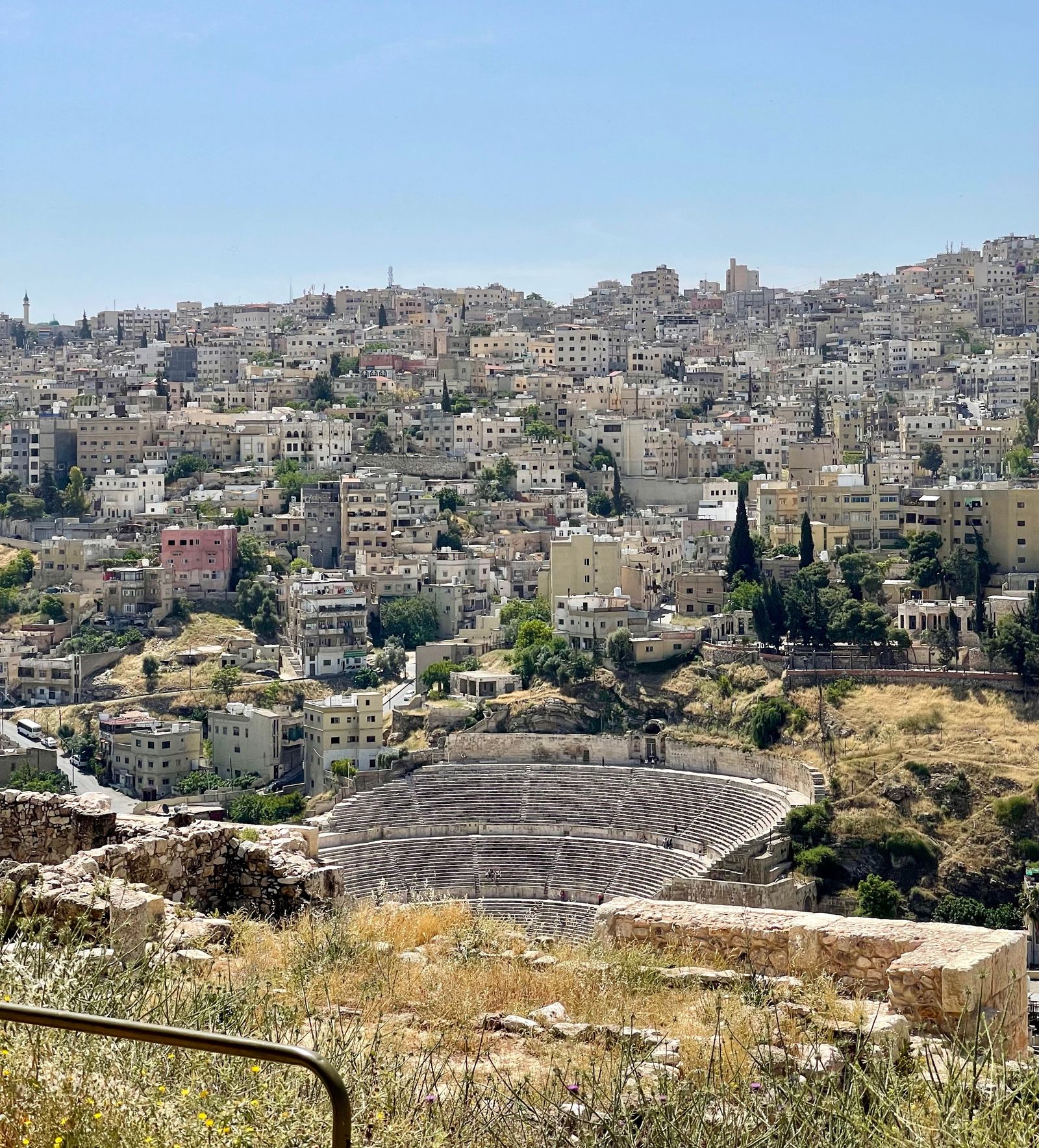Day 2: Discovering Amman

We started getting a feel for the Jordanian culture on our morning bus tour around the capital city of Amman. It is home to more than 4 million of the 12 million people living in all of Jordan. In 2000, the total population of the country was half of that, but it has grown in large part due to refugees from Iraq during the two Gulf Wars and more recently Syrians escaping their civil war. In the past, they also had large influxes of Palestinians, primarily in 1948 and 1967. Many have been assimilated but there are still several Syrian refugee camps near the northern border which is actually pretty close to here.
Compared to its mid-Eastern neighbors of Syria and Egypt, the people here are fairly well off, but as it has no oil (or chooses not to look for it, as our guide explained), their three biggest industries are the mining of phosphate and potash, along with tourism.
Much of the available land and real estate is being bought by wealthy Arabs from Kuwait, Iraq and Saudi Arabia driving up prices greatly. As a result, there are sections that look very modern and upscale while others that have houses piled on top of one another. A major attraction for these investors is Jordan’s political stability. It is viewed as a safe haven in a volatile region.


Our first stop was to the Citadel. It is one of Amman’s oldest known sites, perched high on one of the city’s 27 hills. Archeological excavations reveal that this summit has been used as a settlement and fortress dating back 7000 years.



Our outstanding guide, Mohammed, had an encyclopedic knowledge of the antiquities and culture of Jordan. He also encouraged us to ask questions and that no topic is off the table. When he introduced himself, he explained that given the commonality of the name Mohammed, his full name consists of his name, his father’s name, his grandfather’s name, he s great grandfather’s name and his tribe’s name!

In both the wide-open excavated area as well as the excellent museum on site, we saw examples of the Persian, Greek, Roman, Byzantine, and Arab Muslim periods. The city actually had different names under these realms. The Persians called it Rebbath-Ammon. In 321 BC, when Alexander defeated them, it became Philadelphia(!), a name that stuck for nearly 1000 years through the Greek and Roman eras. Finally it became Amman in 661 AD under Muslim rule.
Looking down on the well-preserved Roman amphitheater area nearby from various vantage points, we were told that it is still used today for concerts and shows. Pavarotti, Botticelli and many others have performed there.


A short bus ride downhill brought us into the heart of downtown Amman. We strolled along the Main Street where Mohammad stopped many times to explain about food, dress, and a sampling of the variety of stores on the busy streets.
We stopped for a tasty treat—Kunafa- a layered all in one snack made out of Seminole wheat, soft sheep cheese, sugar water and pistachios. All the food groups rolled into one delicious treat! This shop had plenty of other great looking desserts as well.


A quick stop at an art gallery that was a collaborative for local artists, and further walking through town led us to our last two destinations.


The local market filled with tons of stalls with beautiful fresh local produce, spices, olives, nuts,etc.





And finally, our lunch destination was Hashem Restaurant, open 24 hours a day, very famous and extremely popular. Here you buy only 3 things— falafel, hummus and fool (a common mid-Eastern fava bean dish}. Very informal with Saran Wrap covering the tables, and no plates, you dip chunks of fresh pita into the dishes making small sandwiches. Served with very hot tea in an even hotter glass, we got better at sponging up the hummus. The falafel was so much better than the first one the night before and the whole experience was really fun, and cheap! The entire meal for 12 people cost less than $25.



After a small respite for r & r which was much needed, we went to a spectacular restaurant for dinner— The Windmill restaurant, as in Don Quixote. Iconic, delicious Jordanian food served family style. The mixed grill as well as the mezze platters were spectacular! We haven’t had a bad meal yet.





comments powered by Disqus